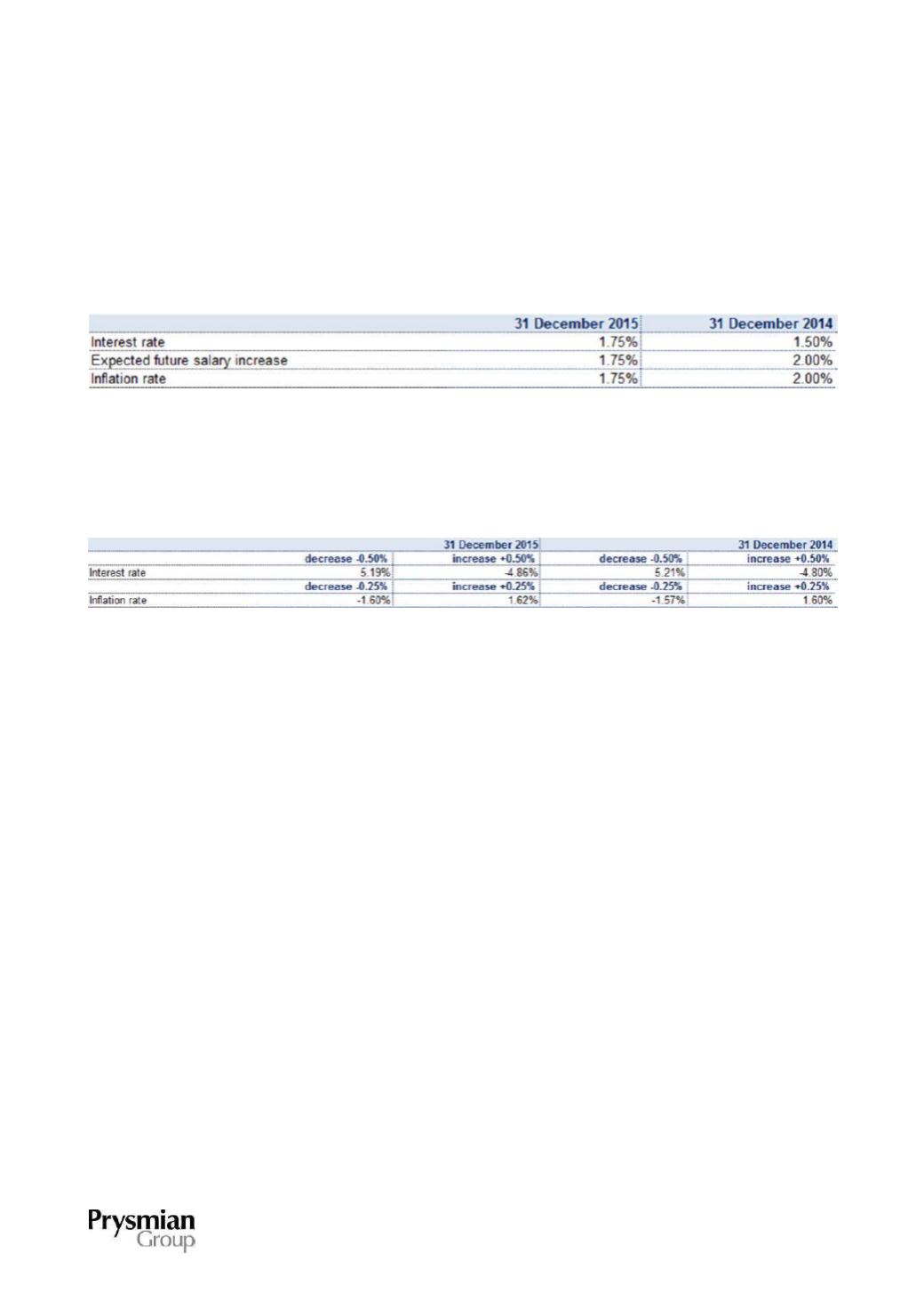

CONSOLIDATED FINANCIAL REPORT | EXPLANATORY NOTES
235
The main risk is the volatility of the inflation rate and the interest rate, as determined by the market yield on
AA corporate bonds denominated in Euro. Another risk factor is the possibility that members leave the plan
or that higher advance payments than expected are requested, resulting in an actuarial loss for the plan, due
to an acceleration of cash flows.
The actuarial assumptions used to value employee indemnity liability are as follows:
The following table presents a sensitivity analysis of the effects of an increase/decrease in the most
significant actuarial assumptions used to determine the present value of benefit obligations, namely the
interest rate and inflation rate:
MEDICAL BENEFIT PLANS
Some Group companies provide medical benefit plans for retired employees. In particular, the Group
finances medical benefit plans in Brazil, Canada and the United States. The plans in the United States
account for approximately 90% of the total obligation for medical benefit plans (unchanged since 31
December 2014).
Apart from interest rate and life expectancy risks, medical benefit plans are particularly susceptible to
increases in the cost of meeting claims. None of the medical benefit plans has any assets to fund the
associated obligations, with benefits paid directly by the employer.
As noted earlier, the US medical benefit plans account for the majority of the benefit obligation. These plans
are not subject to the same level of legal protection as pension plans. The enactment of important health
care legislation in the United States (the Affordable Care Act, also known as "ObamaCare") could result in a
reduction of costs and risks associated with these plans, as plan members move to individual forms of
insurance. Currently the new reform has had no impact on liabilities and costs.

















